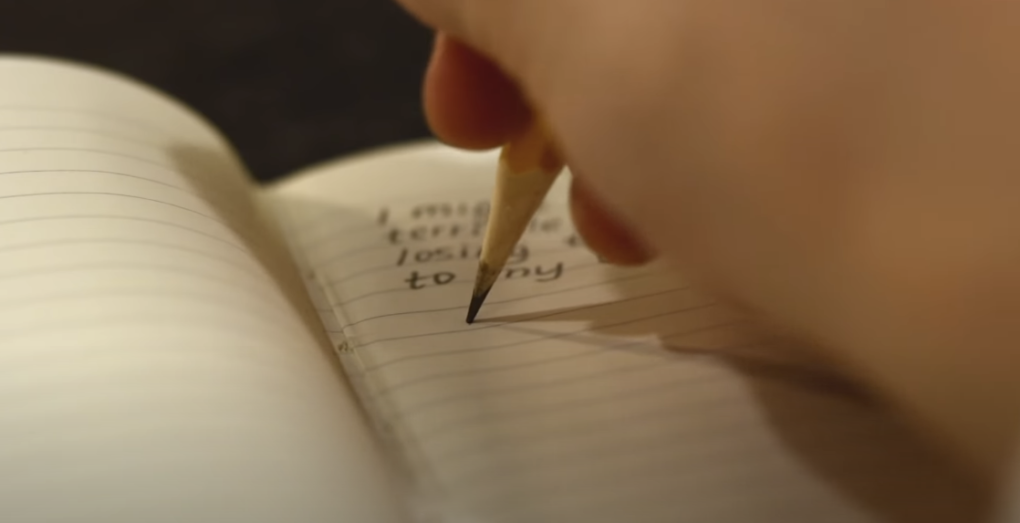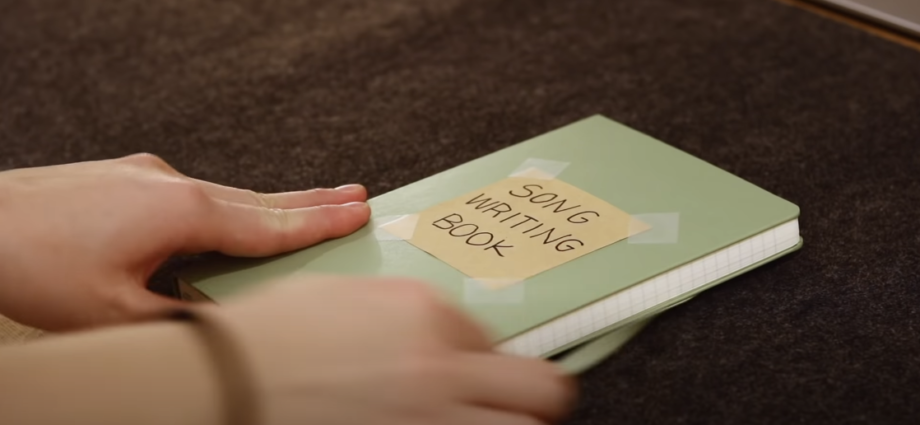Hip-hop culture has seeped into every corner of modern life. From fashion to language, its influence is omnipresent, but nowhere is it more pronounced than in music. The art of rap, a pillar of hip-hop, merges rhythm, poetry, and often, social commentary. Writing a rap song, however, can be challenging. This guide will demystify the process and help you become a deft rap wordsmith.
Step 1: Finding Inspiration and a Topic
When it comes to writing rap lyrics, finding inspiration is the first step in creating powerful and impactful verses. There are several sources you can draw from to spark your creativity and connect with your audience. Whether it’s your personal experiences, societal issues, or purely imaginative ideas, selecting a topic that genuinely interests you is crucial. Your passion and authenticity will shine through the lyrics, making them more relatable to listeners.
To help you brainstorm potential topics for your rap lyrics, let’s explore a table of common themes found in rap music:
Table 1: Common Topics in Rap Music
| Category | Examples |
|---|---|
| Personal Experience | Struggles, Successes, Relationships |
| Societal Issues | Poverty, Politics, Discrimination |
| Creative Concepts | Storytelling, Abstract Thoughts, Wordplay |
Personal Experience:
Drawing from your personal experiences can add a unique touch to your lyrics. You can reflect on your own struggles, successes, and relationships, sharing the emotions and lessons you’ve encountered. Whether it’s overcoming challenges, celebrating achievements, or exploring the complexities of love and friendship, your personal experiences can provide a wealth of material for your rap lyrics.
Societal Issues:
Rap has long been a platform for addressing societal issues and speaking truth to power. Delving into topics such as poverty, politics, and discrimination can help shed light on important social problems. You can express your thoughts and observations on these issues, sparking conversations and inspiring change through your lyrics.
Creative Concepts:
In addition to personal experiences and societal issues, exploring creative concepts in your rap lyrics can showcase your artistic abilities. Storytelling allows you to captivate your audience by weaving narratives and characters into your verses. Abstract thoughts and metaphors can be used to convey deeper meanings and emotions. Wordplay, such as clever puns and double entendres, adds a playful and skillful element to your lyrics.
Remember, while these are common topics in rap music, it’s essential to find your own unique perspective within these themes. Authenticity and staying true to your own voice will make your lyrics stand out and resonate with your audience. Take the time to reflect on what truly matters to you and how you can express it through your rap lyrics.
Step 2: Writing the Hook
A catchy hook, or chorus, serves as the foundation of a rap song, as it captures the essence of the track and leaves a lasting impression on listeners. It is often memorable and repeatable, setting the mood of the song and summarizing its central theme. When crafting your hook, it’s important to start by considering the core message of your song. Condense this idea into a couple of lines to create a compelling and engaging hook that resonates with your audience.
To assist you in writing an effective hook, here are some steps you can follow:
- Choose a catchy phrase or a couple of words related to your theme: Select words or phrases that encapsulate the main idea or emotion you want to convey in your song. It could be a powerful statement, a memorable phrase, or a play on words that grabs the listener’s attention. Think about the central theme of your rap and identify the key words or concepts that represent it;
- Develop a melody or rhythm for your phrase: Experiment with different melodies or rhythms that fit the mood and style of your rap. Consider the tempo, flow, and overall vibe of the song. You can try singing or rapping the chosen phrase in various ways to find the best fit. Play around with different musical elements, such as beats, chords, or samples, to enhance the impact of your hook;
- Make it simple and memorable: Simplicity is key when it comes to crafting a hook that sticks with the listeners. Aim for concise and easily understandable lines that can be instantly grasped and remembered. Avoid overly complex or convoluted phrases that may confuse or lose your audience. Repetition can be a powerful tool in making your hook memorable, so consider incorporating repetitive patterns or catchy hooks that are easy to sing along to.
By following these steps, you can create a hook that grabs attention, conveys the essence of your rap song, and keeps your listeners engaged. Remember to stay true to your style and message while focusing on crafting a hook that resonates with your intended audience.
Step 3: Constructing the Verses

A rap song typically consists of two or three verses that expand upon the theme introduced by the hook. The verses provide an opportunity to showcase your lyrical prowess and delve deeper into the subject matter. It is in the verses where the complexity of the lyrics often contrasts with the simplicity of the hook, creating a dynamic and engaging experience for the listener.
To effectively construct your rap verses, consider the following steps:
- Create a rhythm or flow: Rap is inherently rhythmic, and finding the right flow is crucial. Experiment with the syllables and stresses in words to develop your unique cadence and delivery. Play around with the tempo, pause, and emphasis on certain words to create a compelling rhythm that complements the beat and engages the listener;
- Use rhymes: Rhyme schemes add structure and cohesion to your verses. You can choose from a variety of rhyme patterns, ranging from simple (ABAB or AABB) to more complex (ABAC or ABCB). It’s important to strike a balance between maintaining a natural flow and incorporating rhymes that enhance the overall impact of your lyrics. Avoid forcing words to fit and strive for a seamless integration of rhymes within your verses;
- Include wordplay: Wordplay adds depth and creativity to your lyrics. It involves using techniques such as similes, metaphors, alliteration, and other literary devices to evoke imagery, create clever associations, and convey multiple layers of meaning. Employing wordplay showcases your skill as a lyricist and allows you to captivate your audience with your clever word choices and imaginative language;
- Tell a story: Crafting verses that tell a story can be a powerful way to engage your audience. Develop a narrative arc within your verses, incorporating vivid descriptions, relatable characters, and compelling plotlines. This storytelling element helps keep listeners hooked from the beginning to the end of your rap. Whether it’s recounting personal experiences, illustrating societal issues, or weaving fictional tales, storytelling adds depth and resonance to your verses.
By following these steps, you can construct verses that not only complement the theme established by your hook but also showcase your unique style and skills as a rapper. Remember to focus on maintaining a strong flow, incorporating rhymes effectively, utilizing wordplay, and captivating your audience through engaging storytelling techniques.
Step 4: Adding a Bridge
A bridge is an optional component of a rap song that serves to introduce a new melody, perspective, or thematic element. It provides a moment of contrast and variety within the structure of the song and can heighten the emotional impact. While a bridge is not a necessary component, it can add depth and interest to your rap composition.
When incorporating a bridge into your rap song, consider the following:
- Introduce a new melody or perspective: The bridge offers an opportunity to introduce a fresh melodic element that differs from the verses and the hook. It can provide a change in tone, mood, or musical arrangement, creating a distinct segment within the song. Additionally, the bridge can introduce a new perspective or viewpoint that complements or challenges the themes explored in the verses and the hook. This change can add complexity and depth to the overall composition;
- Connect with the overall theme: While the bridge may introduce new elements, it should still connect with the overall theme of the song. It should contribute to the cohesiveness of the composition and not feel disconnected or out of place. The bridge can offer a different perspective or shed new light on the central theme, providing a fresh angle for listeners to consider. It should enhance the narrative or emotional arc of the song rather than distract from it;
- Create a distinct segment: The bridge should be clearly distinguishable from the verses and the hook. It can be accomplished through a shift in musical arrangement, tempo, rhythm, or vocal delivery. This distinctiveness helps to capture the listener’s attention and creates anticipation for the return to the familiar elements of the song. Experiment with different musical and lyrical approaches to ensure that the bridge stands out while still maintaining a sense of coherence within the overall composition.
Remember, the inclusion of a bridge in your rap song is a creative choice. Not every song requires a bridge, and it is essential to consider whether it adds value to the overall composition. If you decide to include a bridge, make sure it contributes to the variety, emotional impact, and cohesiveness of the song. Experiment with different melodies, perspectives, and thematic elements to find the right balance that enhances the overall listening experience.
Step 5: Finalizing the Structure
Once you have developed the elements of your rap song, it’s time to finalize the overall structure. While there is flexibility and room for creativity, a typical rap song follows a specific format that allows for a cohesive and engaging listening experience. The most common structure is Verse-Hook-Verse-Hook-Verse-Hook. However, artists can also experiment with variations, such as starting with the hook or incorporating a bridge.
To help you understand and finalize the structure of your rap song, let’s explore a table outlining the typical components and their functions:
Table 2: Typical Rap Song Structure
| Part | Function |
|---|---|
| Hook | Sets the theme, is memorable and catchy |
| Verse | Expands on the theme, showcases lyricism |
| Bridge | Adds variety, introduces a new perspective |
The structure of a rap song can be broken down into these key parts:
- Hook: The hook serves as the anchor of your song. It sets the theme and often contains a memorable and catchy phrase that captures the attention of the listener. The hook is typically repeated throughout the song and acts as a unifying element that ties the verses together;
- Verse: The verses expand on the theme established by the hook. This is where you have the opportunity to showcase your lyrical skills, express your thoughts, tell stories, or discuss societal issues. Each verse can explore different aspects of the theme, allowing for variation and depth within the song;
- Bridge: The bridge is an optional component that adds variety and introduces a new perspective or musical element. It offers a departure from the established structure and can heighten the emotional impact of the song. The bridge serves to break up the repetition and provides a fresh angle for the listener to engage with.
It’s important to note that the order and number of verses, as well as the inclusion of a bridge, can be adjusted to suit your artistic vision. Some artists may choose to start the song with the hook, while others may incorporate a bridge before the final hook to add a unique touch to the structure.
Step 6: Polishing Your Lyrics
Once your song structure is complete, it’s crucial to spend time refining and polishing your lyrics. This stage of the process involves reading through your lyrics to ensure that they make sense, flow correctly, and that there are no awkward phrases or lines. It’s an opportunity to catch any mistakes and fine-tune your work to ensure that it’s the best it can be.
To polish your lyrics effectively, you should:
- Ensure clarity and coherence: Make sure that your lyrics make sense and convey the intended message effectively. Each line and verse should flow into the next, creating a coherent narrative or argument throughout your song;
- Check for consistency: It’s important that your rhyming, flow, and rhythm are consistent throughout your song. Inconsistencies can disrupt the flow of your song and potentially confuse your listeners;
- Edit ruthlessly: Don’t be afraid to cut lines or words that don’t add value to your song. Less is often more in songwriting, and every word should serve a purpose. Remember, good writing is rewriting.
Step 7: Rehearse and Refine

The final step in writing a rap song is to rehearse it and make any necessary refinements. This step is crucial as it allows you to ensure that your lyrics fit well with the beat and that they flow as intended when spoken or rapped out loud.
During rehearsal, pay attention to your flow and delivery. Make sure your lyrics are delivered clearly and that they align well with the beat. Don’t be afraid to make adjustments to your lyrics or flow during this stage. Your lyrics might look great on paper, but if they don’t sound good when spoken or rapped, they may need further refining.
Record your rehearsals and listen to them. This can help you spot areas that need improvement that you might not notice in the heat of the performance. Ask for feedback from trusted friends or colleagues. They can provide an outside perspective and potentially offer valuable suggestions.
Conclusion
Writing a rap song is a unique fusion of creativity and structure. It requires a grasp of rhythm, a knack for storytelling, and a keen sense of social observation. Each step of this guide will bring you closer to crafting verses that resonate, hooks that captivate, and ultimately, songs that matter. Always remember, rap is a platform for your voice, so speak your truth and let the world listen.
While daunting, this creative journey is immensely rewarding, and the end product—a rap song that encapsulates your thoughts, feelings, and experiences—is a testament to your creative spirit. So, take the mic, ignite the stage, and let your words flow.
FAQS
Both are important and serve different functions. The beat sets the mood and rhythm, while the lyrics convey the message and showcase your creativity. A great rap song often has a balance of a catchy beat and compelling lyrics.
Yes, it’s possible to write a rap song without a hook. Some artists choose to focus entirely on their verses to tell a story or deliver a message. However, a hook can make your song more memorable and catchy.
Reading widely can improve your vocabulary and expose you to different writing styles. Additionally, practice writing regularly, experiment with different rhyme schemes, and study the work of rappers you admire.
Try to change your environment or take a break. Listen to different types of music or engage in a completely different activity to refresh your mind. You can also use writing prompts or freewriting exercises to spark creativity.
